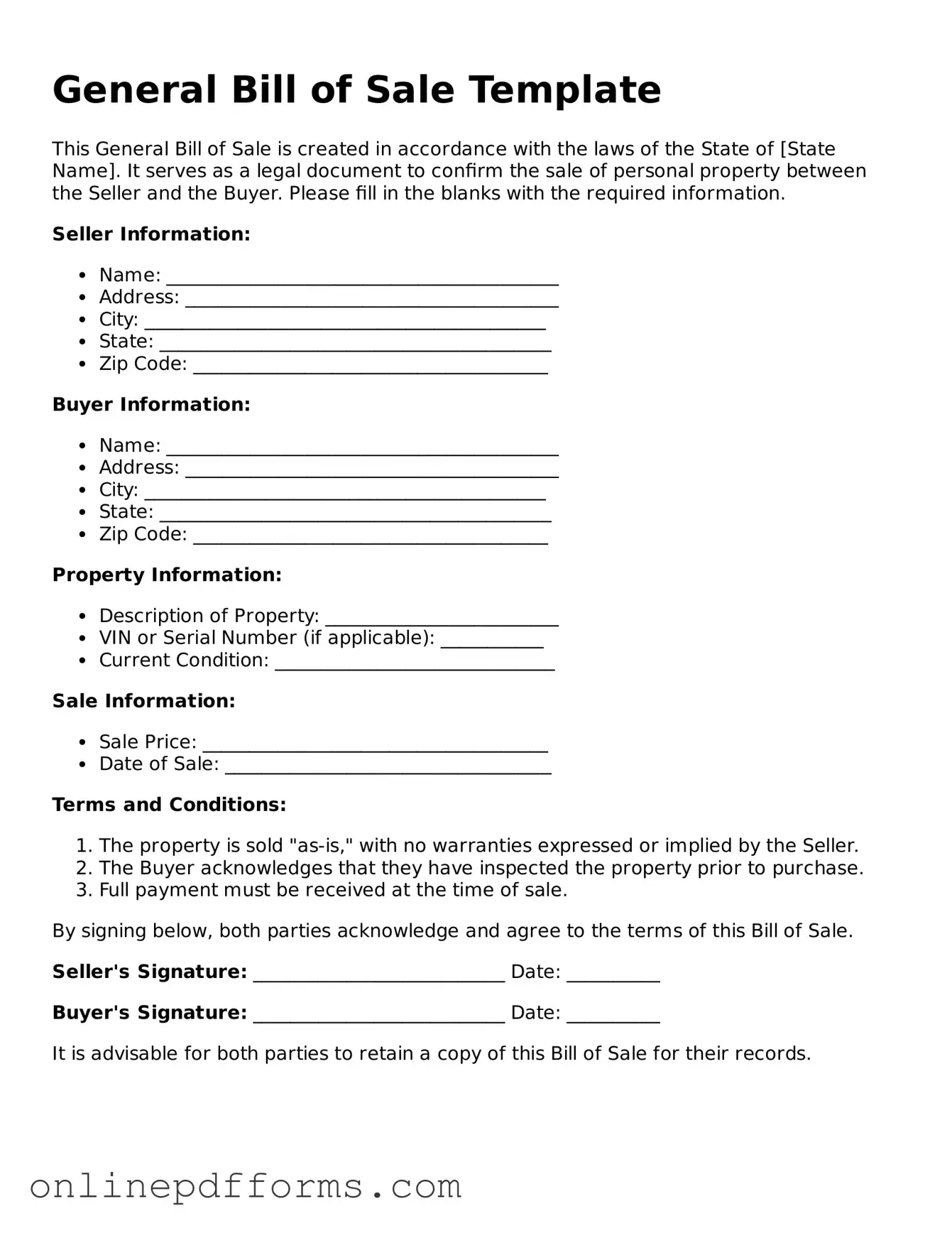The General Bill of Sale is often compared to a Vehicle Bill of Sale, which specifically pertains to the transfer of ownership for a motor vehicle. Like the General Bill of Sale, this document serves as proof of the transaction between the buyer and seller. It typically includes details such as the vehicle identification number (VIN), make, model, year, and the sale price. Both documents protect the interests of both parties by providing a clear record of the sale, which can be important for future reference or in the event of disputes.
Another document similar to the General Bill of Sale is the Personal Property Bill of Sale. This form is used for the sale of various personal items, such as furniture, electronics, or collectibles. It outlines the specifics of the items being sold, including descriptions and condition. Just like the General Bill of Sale, it serves as a legal record of the transaction and helps to clarify ownership, ensuring that the seller no longer has any claim to the items once the sale is complete.
The Real Estate Purchase Agreement shares similarities with the General Bill of Sale in that it is a formal contract between a buyer and seller. While the General Bill of Sale is generally used for personal property, the Real Estate Purchase Agreement focuses on real property transactions. This document includes essential information such as the property address, sale price, and any contingencies. Both documents aim to protect the rights of the parties involved and provide a clear outline of the terms agreed upon during the sale.
A Lease Agreement can also be likened to the General Bill of Sale, particularly in the context of transferring the right to use property. While a Bill of Sale signifies a permanent transfer of ownership, a Lease Agreement allows one party to use property owned by another for a specified period. Both documents detail the terms of the arrangement, including payment amounts and conditions, ensuring that all parties understand their rights and responsibilities during the transaction.
Lastly, a Receipt for Payment is another document that resembles the General Bill of Sale in its function as proof of a transaction. While a General Bill of Sale often includes more detailed information about the item being sold, a receipt typically serves as a simpler acknowledgment of payment. Both documents provide evidence that a sale has occurred, helping to protect the buyer and seller in case of future disputes regarding ownership or payment.
